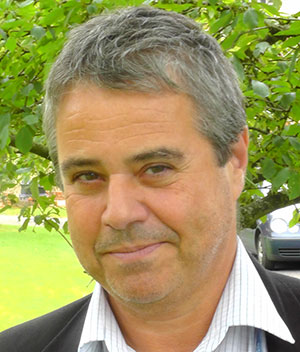Ten million people in Africa are affected by epilepsy, and 80 per cent of those are not treated with readily available modern drugs. Professor Ley Sander, Epilepsy Society’s medical director, describes the challenges of working in Africa.

‘There are very few neurologists in sub-Sahara Africa. For example in some countries there is one neurologist for every 5 – 10 million people. There are only five or six centres throughout the whole continent with up-to-date MRI scanners and on top of this, epilepsy is an amazingly stigmatised condition. One young lady almost died in hospital with her family preferring medical staff to believe her injuries were the result of physical abuse within the family rather than admitting she had epilepsy. The stigma extends to both the person with the condition and the family.
‘A joint project spearheaded by the World Health Organisation (WHO), the International League Against Epilepsy (ILAE) and the International Bureau for Epilepsy (IBE), has been working across a number of African regions to increase the percentage of people with epilepsy who receive appropriate treatment.
‘Because our aim is to establish a sustainable model of care and support we can only go into countries which already have some form of primary care, even if it is at a very basic level.
Short supply of drugs
‘The challenge of Africa is that it is made up of more than 50 countries all with different, attitudes, beliefs and governments, some of which can be very dysfunctional. What works on one side of the river does not necessarily work on the other side. What is universal throughout, however, is the challenge of the four ‘As’: accessibility, affordability, availability and awareness.
‘The vastness of the territory and the sparseness of medical services make accessibility a huge problem. Of the 40 least wealthy countries in the world, 80 per cent are in Africa. Poverty and lack of human resources mean that cheap, once-a-day drugs such as phenobarbital are often in short supply and the stigma attached to epilepsy leaves people frightened to seek medical treatment for epilepsy. The first port of call is frequently the traditional healer.
Epilepsy clinic
‘Some areas are more receptive than others to Western intervention. In one of my first experiences of Africa, we set up an epilepsy clinic but initially no one came. Then we had a few referrals through a psychiatrist and people were able to see how effective anti-epileptic drugs could be in controlling seizures. Suddenly everyone came.
‘But in general the word of the traditional healer holds much influence: they believe that epilepsy is caused by supernatural forces and that the demons are too strong for even their concoctions and incantations.’
Professor Ley Sander is part of a WHO initiative, Mental Health Gap Programme (mhGAP) Close the Gap, Dare to Care, which aims to ensure that mental health, including epilepsy, is integrated into health care systems across the globe.
